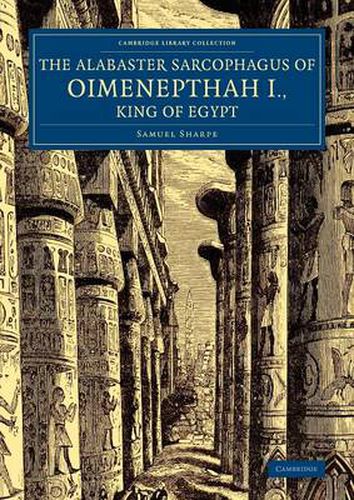Readings Newsletter
Become a Readings Member to make your shopping experience even easier.
Sign in or sign up for free!
You’re not far away from qualifying for FREE standard shipping within Australia
You’ve qualified for FREE standard shipping within Australia
The cart is loading…






Oimenepthah I, better known to us as Seti I, was regarded as a great pharaoh by his contemporaries, although his son Ramesses II would claim greater renown. Seti’s tomb was discovered by Belzoni in 1817 and was the first to be found to have extensive decorations throughout. The huge alabaster coffin found in the tomb was sold to Sir John Soane, who held a three-day party upon its arrival at his London house, where it can still be seen. Written by the noted Egyptologist Samuel Sharpe (1799-1881), this illustrated description of the intricately decorated sarcophagus was published in 1864. By the time of his death, Sharpe was regarded in Britain as one of the most important figures in helping to popularise all things Egyptian. With the artist and sculptor Joseph Bonomi (1796-1878), who provided the drawings here, he collaborated in organising the Egyptian court at the Crystal Palace in 1854.
$9.00 standard shipping within Australia
FREE standard shipping within Australia for orders over $100.00
Express & International shipping calculated at checkout
Oimenepthah I, better known to us as Seti I, was regarded as a great pharaoh by his contemporaries, although his son Ramesses II would claim greater renown. Seti’s tomb was discovered by Belzoni in 1817 and was the first to be found to have extensive decorations throughout. The huge alabaster coffin found in the tomb was sold to Sir John Soane, who held a three-day party upon its arrival at his London house, where it can still be seen. Written by the noted Egyptologist Samuel Sharpe (1799-1881), this illustrated description of the intricately decorated sarcophagus was published in 1864. By the time of his death, Sharpe was regarded in Britain as one of the most important figures in helping to popularise all things Egyptian. With the artist and sculptor Joseph Bonomi (1796-1878), who provided the drawings here, he collaborated in organising the Egyptian court at the Crystal Palace in 1854.